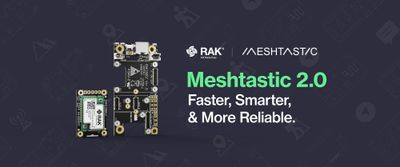Launching a New, Low-cost, LoRa-Bluetooth Hybrid Star: RAK11720 Ambiq Apollo3 Module for LoRaWAN
Making the IoT easy isn’t easy! But we believe we have done it again with the launch of our new hybrid WisDuo module, which usefully combines LoRa and Bluetooth BLE 5.0 capabilities.
The new RAK11720 teams up the Ambiq Apollo3 Blue chip (AMA3B1KK-KBR-B0) with the Semtech SX1262. This makes it very flexible and suitable for a wide range of IoT applications. Just like the other hybrid modules in our range - RAK4600 (nRF52840 + SX1272) and RAK4630 (nRF52840 + SX1262) - it is fully supported by the RUI3 firmware development framework.
We understand the importance of having Bluetooth capabilities on LoRa P2P and LoRaWAN end devices. This is why we are always exploring new chips we can use with our modules. Bluetooth enables the easy wireless configuration of the numerous devices that may need to be deployed in new applications, such as in smart buildings, factories, or even cities. RAKwireless allows you to do this configuration remotely via our mobile app - WisToolBox. The new RAK11720 is completely compatible with WisToolBox because of the RUI3 firmware development network, as is our previous hybrid module, RAK4630.
Other advantages of the RAK11720 are its size and its pin-to-pin compatibility with our popular module RAK3172. The RUI3 framework API allows code to be shared between these modules and simplifies the porting process between them. Since they have a standard hardware footprint, the user can start with a LoRaWAN-only module and then upgrade to BLE capability without making many changes to the PCB or coding.
This easy process means development only needs to be done once, saving time and money and reducing the time to market. Even better, the two modules can work as secondary sources for each other in case either of them goes obsolete.
The RAK11720 arrives ready-equipped with a powerful AT command set that can be used in tandem with a co-processor or external computer over UART. This means a user can get started right away without writing any code.
However, it’s important to think about the cost and BOM when building a product, especially with chip shortages still affecting some supply chains. Working with the RUI framework, the new RAK11720 allows users to ditch the co-processor and compile their functionality directly into the module. This saves them money and lowers the total BOM cost.
Removing the co-processor has other benefits too: it makes the R11720 faster, more efficient, and less power-hungry. Because it doesn’t have to process string data or wait for serial data going back and forth, it also cuts down on code space and processing times. In applications where batteries are heavily used and efficiency is important, removing the co-processor is a great way to save power. The decision is entirely up to the user: opt for an AT command set with a co-processor, or build their application!
The RAK11720 also has a better usable ROM and RAM capacity than our previous modules: 1MB and 384KB, respectively. This means users are not limited to the algorithms required by their edge applications. They can create custom firmware via Arduino by using RUI3 APIs.
With these multiple advantages, the new RAK11720 module is one to look out for. We are confident that the RAK11720 will empower IoT developers to create new applications, and we’re excited to see the business use cases it will inspire.
Read more: Smart Manufacturing 101: Exploring IoT Applications in Modern Factories





